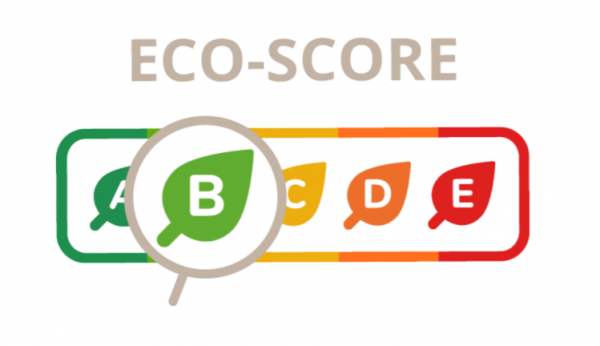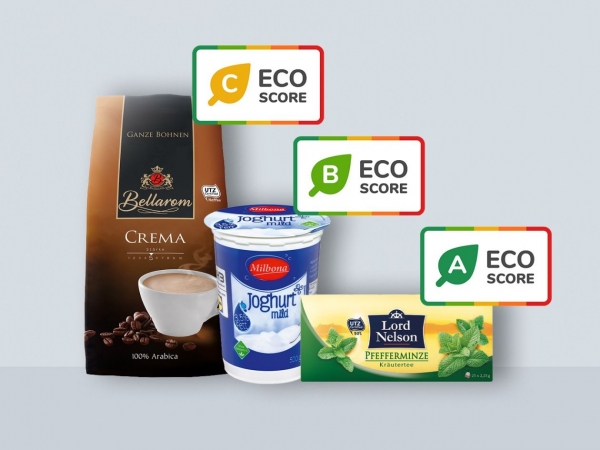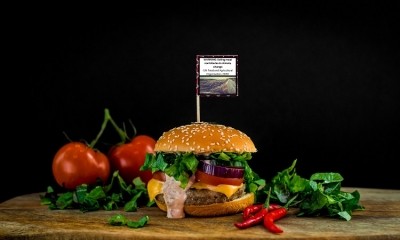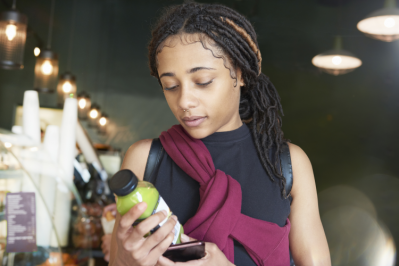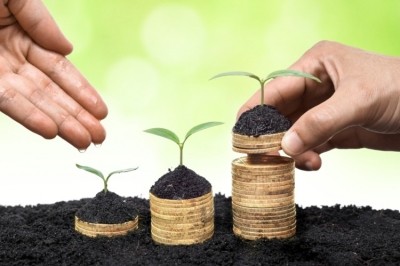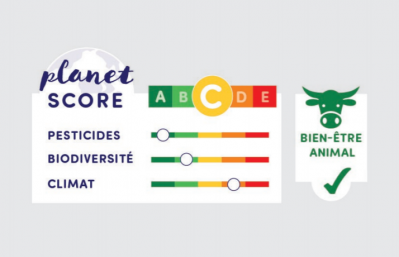Eco-Score’s European expansion: Lidl and Colruyt adopt environmental footprint labelling
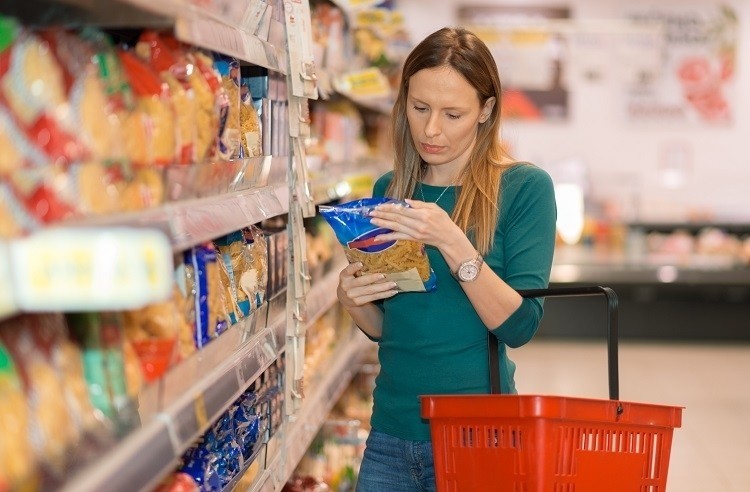
Environmental claims resonate with growing numbers of today’s consumers. According to one recent EU study, 57% of EU consumers are receptive to environmental claims when making purchase decisions.
As a result, ‘green’ labels have multiplied. Ecolabel Index is currently tracking 455 ecolabels worldwide, with over 120 different types in use on food and beverage products.
But this has left consumers concerned over ‘greenwashing’ and what claims can be trusted. Indeed, a recent study from Spanish consumer group OCU found that nearly half of consumers (43%) do not trust environmental claims on products.
A consortium of French food tech businesses, spearheaded by the ECO2 Initiative, came together to offer a solution this year, developing a system that ranks food products on the basis of their overall environmental impact.
The system gives products a score out of 100 that corresponds to a letter / colour (dark green to red / A to E), similar to the Nutri-Score communication. The score is calculated through an equation: Eco-Score = life cycle assessment (LCA) + bonus points – points deducted.
Data on the LCA is drawn from an analysis of more than 2,500 product categories available in the Agribalyse database. This is based on the PEF method (Product Environmental Footprint) and considers issues such as climate change, water use, land use and acidification.
The developers say it is ‘transparent’ and ‘can be easily understood and applied by all players’.
When the launch was announced, the label had already been taken up by online restaurant and food delivery start-up FoodChéri, recipe app Frigo Magic, ready meal company Seazon, and food scanning app Yuka in France. Online organic store La Fourche had onboarded the label for some of its own-label products, including its line of cooking chocolate.
Now, Eco-Score has received the backing of some of Europe’s food retail majors and expanded its use into additional markets, with news that Colruyt will leverage it in Belgium and Lidl will trial it in Germany.
Moving to the mainstream
In March, Colruyt revealed customers can consult the Eco-Score of the food products of - initially - the Boni Selection brand’s 2500 SKUs via the group’s SmartWithFood app.
The company plans to extend the scope of the project thereafter – and significantly this looks set to draw in national brands as well as own label items.
“Score recognition will be rolled out step-by-step to other app applications such as MyColruyt, Xtra and Collect&Go. Before the summer, the Eco-Scores of national brand products should be available for consultation via our online tools. In a next phase, we will start a gradual roll-out of the Eco-Score on the packaging of all our Boni Selection food products,” explained Stefan Goethaert, who is responsible for the Eco-Score project at Colruyt Group.
The decision reflects growing consumer desire for transparent and understandable information about the food they purchase and builds on the approach the supermarket operator has taken with Nutri-Score, he added. “People want simple, relevant information. They want to go beyond how healthy a product is and what its nutritional value is. Market research has shown that customers are also asking questions about the environmental impact of their products. It is up to us as retailers to help them, starting with our private label products.
“We can guide customers to make really well-informed choices, both in terms of health - with the Nutri-Score - and in terms of the environment with this Eco-Score.”
When Lidl announced that it would take up the labelling scheme this week, it too stressed the need to provide consumers with the ‘transparency’ they desire ‘at a glance’.
In the ‘next few weeks’ Lidl plans to kick off discussions on the use of Eco-Score with representatives from civil society, industry and regulators. The German discounter will then initiate a ‘test phase’ that will see it examine how consumers perceive the label across its Berlin branches. To this end, Lidl will add Eco-Score labels to ‘select groups of food’.
Depending on the results, the food retailer will then consider implementing sustainability labelling across its German business. Lidl stressed that it remains ‘open’ to industry-wide ecological labelling alternatives.
‘In five years, this will be the norm’
Lidl’s willingness to consider an industry-wide approach is telling. It demonstrates the depth of support eco-labels are garnering from retailers – alongside the need for labelling that consumers feel is trustworthy.
Christian Reynolds, senior lecturer at the Centre for Food Policy, City University, believes eco-labels are going to become very much part of the landscape.
Pointing to developments like Quorn’s move to introduce carbon labelling, he noted: “Three-to-four years ago we didn’t have this data. This is coming on in leaps and bounds… In five years, eco-labels won’t be groundbreaking, they will be the norm. It is really what consumers now want and expect.
“If you aren’t having these discussions now with your procurement teams, you should be.”
Critics of Nutri-Score repeatedly highlight that calculating one total product score rather than looking at the different nutrients a product is comprised of is an oversimplification. And, clearly, Eco-Score could be open to a similar criticism. But Reynolds believes that systems like this are important because they are accessible and easy to interpret.
“Each food has strengths and weaknesses. If you compare rice and oats, one has a lower carbon footprint, while the other has a lower water footprint… Single scores are reductionist, but these are nightmarishly complex issues. It is really good to have on-pack because it gives people something easily understandable that they can act on.
“If you give people trustworthy, evidence-based information they can start to use it. Clear labelling is helpful in making these comparisons and raising awareness”
